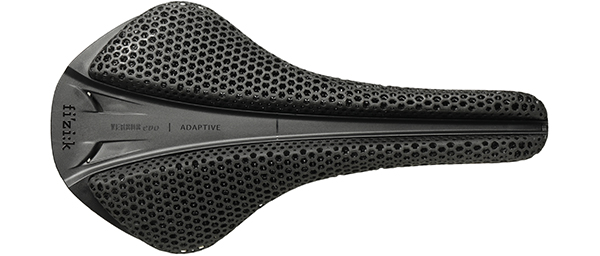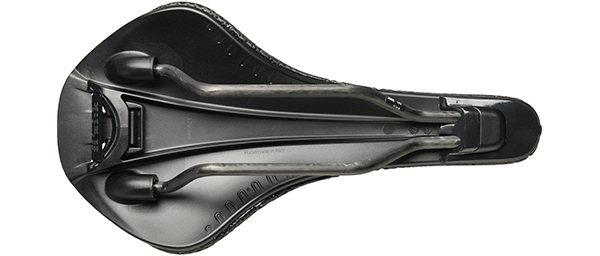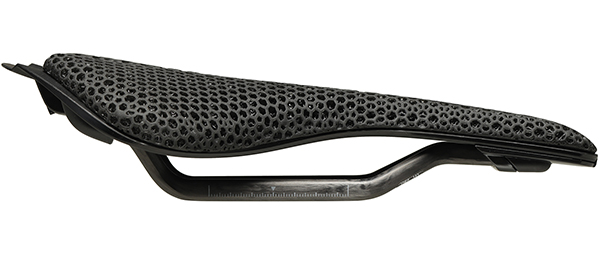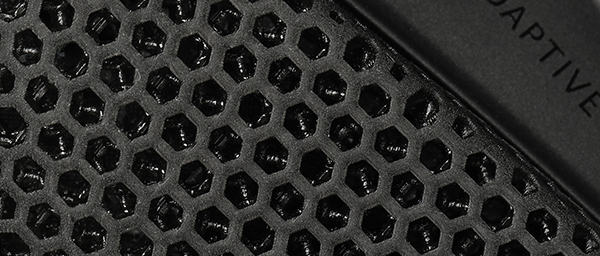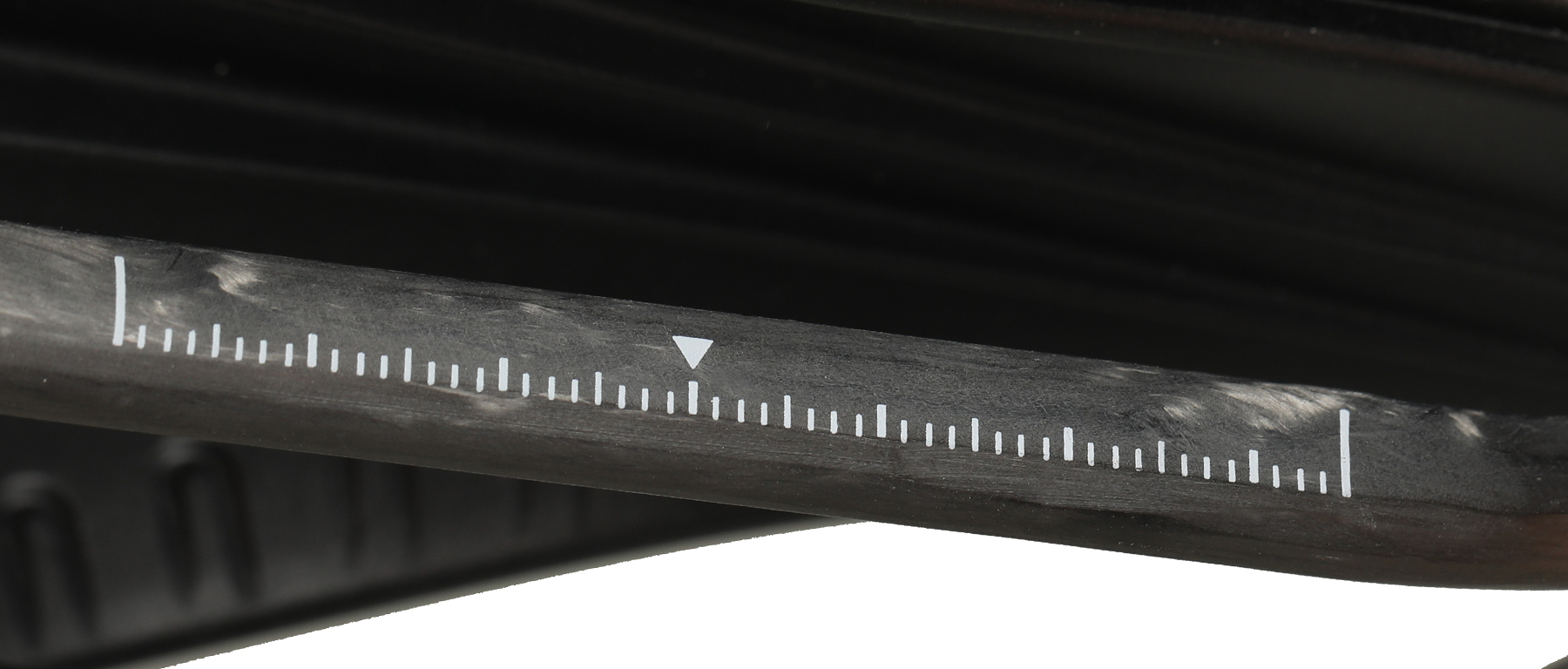Equipment > Components > Saddles > Road
Description

If you are riding a Antares Versus Evo R1 saddle or any other model and seeking new comfort and performance, step right up. Fizik has always challenged or forced a new perspectives in contemporary saddle design, delivering well thought out designs and variations that many pro cyclists were drawn to from the start. Among the Fizik platforms that have been strong sellers, the Antares may have the most appeal to cyclists who prefer a semi to aggressive riding posture, have narrow to moderate width sitbone alignment, and prefer a more minimalist option. Of course Fizik developed several iterations, including the Versus, Versus Evo, etc. When developing their new Adaptive saddle top system, the Antares Versus Evo was their platform choice. The R1's stiff shell and full length deep channel offered the optimal features to carry and maximize the potential of the revolutionary Adaptive padding. This visually-striking material takes full advantage of the most current digital 3D printing technology to develop a new saddle without the constraints or limitations imposed by traditional production methods and materials. So what is Adaptive?
Well, it's complicated, but here is the condensed, but complicated version. The base goal of the Adaptive development was Tailored Zonal Cushioning, which would effect support where necessary and relief where desired. Partnering with and utilizing Carbon3D's technology, biomechanists and engineers found an unprecedented possibility: to design and manufacture multiple functional zones within the saddle, tuning each of them separately for specific mechanical properties. Each of these key functional zones is engineered with a distinctive cushioning and mechanical response, joined together progressively and seamlessly in the same padding via digital printing. The Adaptive saddle padding is crafted by Carbon3D using its revolutionary Digital Light Synthesis technology. DLS is an additive manufacturing process which uses digital ultraviolet light projection, oxygen permeable optics, and programmable liquid resins to produce parts with excellent mechanical properties, resolution and surface finish.
Got all that? Essentially the saddle top is printed via a 3D printing system, that as detailed above, creates sort of web of voided hexagonal and other structures, shapes and connections that is stiffer and stronger where you need the most support, and softer where you don't. These zones are all connected and complementary. The Adaptive saddle top sort of resembles chains of molecules or chemical bonds. It is visually interesting, but by applying pressure with just your hands you can feel the variable nature of the system and appreciate the complexity. When seated, the effect is like floating on an incredibly supportive cloud. It can feel a little strange at first, but most users find it supportive and comfortable, while delivering an appropriate pedaling platform. Please keep in mind that Fizik in no way created a computer model, printed a saddle top and called it good. Throughout many hours lab and miles of road and terrain testing, great focus was put on understanding how the pressure patterns change according to different bike geometries, riding positions, and riding styles. Many iterations were made in the process- one immediate advantage of 3D printing- and once the team found the proper balance of all riding attributes, the focus turned to other real world considerations.
While Adaptive is cool and innovative, it also had to deliver long lasting performance in the conditions and stresses that cyclists endure while riding. The saddle is very easy to clean. Even with the filthiest road muck, all you need to do is simply hose it over with water. Whatever gets in, gets out. The Fizik program put it through the most severe tests, simulating accelerated weathering, UV aging and wear resistance by following strict protocols. The result is saddle that will give you comparable or better life than than "standard" model.
Of course the Adaptive system had to be married to a saddle structure and here we have the braided carbon rail equipped Antares Versus Evo R1 with it's Carbon Twin Flex shell. The shell is not an open design, but the Evo maintains a full length channel of plenty of depth. The shell is stiff and resilient relying on the Twin Flex set-up for base comfort, at a light weight. The 10x7mm oval braided carbon hollow rails deliver strength and stiffness to the shell while reducing the effects of road vibration. The shell is ICS accessory compatible and is available in two widths: 139 and 149 mm, both in the 274mm length. The complete saddle in the 140mm width weighs in at 170 grams.
When considering the potentially ride-changing experience of the Antares Versus Evo R1 Adaptive Saddle you should also take into account the height of the Adaptive padding system. You will have to make some seatpost adjustments, which is fairly normal when changing saddles, but important to note here. Fizik is identifying the height measurement taken at the 75mm width point, which is 148mm from the nose tip on both 139 and 149 mm options. As with all other saddles, there is truly no way to know if the Antares Versus Evo R1 Adaptive is right for you but reviews and ride reports a wide range of cyclists finding the the fit and support agreeable. How it responds to you, and you it will vary person to person. Most adopters take to it quickly. One thing is for sure, Fizik continues to disrupt, analyzing and implementing new technologies and designs with the goal of improving the cycling experience. Return to Top
Features
- Performance cycling saddle with a revolutionary 3D printed padding offering seamlessly engineered zonal cushioning
- New Adaptive system formed with the Antares Versus Evo R1 saddle base
- Digital 3D printing allowed development a new saddle concept without material or process constraints or limitations
- Adaptive saddle padding is crafted by Carbon3D using its revolutionary Digital Light Synthesis technology
- Tested and iterated through many hour of lab work and many miles of actual riding experience
- Easy to clean, engineered for long life with UV protection, in all all conditions and heavy use
- Antares VS Evo Carbon reinforced nylon shell with full length deep channel
- Braided carbon oval rails (10x7mm) are stiff, resilient, and create a firmer rail/shell interface
- ICS accessory compatible
- Height at 75mm width: 58 mm
- Length from nose to 75mm width: 148 mm
- Overall length: 274mm
- Width options: 140mm, 149mm
- Color: Black
- Weights: 140mm - 170 grams listed (168g actual), 149mm- 180 grams listed (181g actual)
